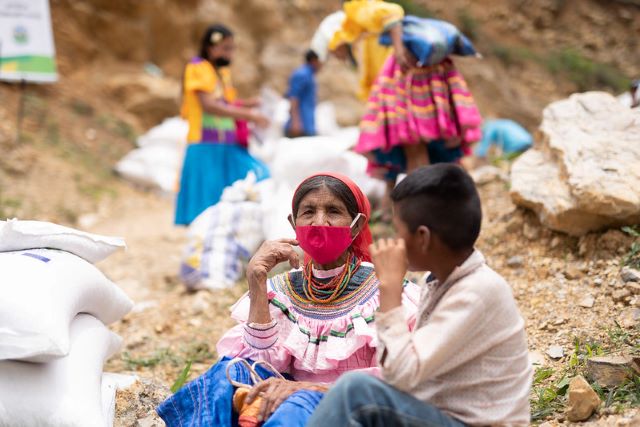Indigenous Inequities in Guatemala

Indigenous Guatemalans (mostly Mayans) generally have a much harder life than the rest of their compatriots. Guatemala had a long history of being under Spanish rule and went through multiple difficult wars. Even though Guatemala has the largest economy in all of Central America it has the second-highest poverty rate in the Americas. Indigenous Guatemalans are much poorer than those not self-identifying as indigenous. Most indigenous laborers earn less than five US dollars in a day. 79 percent of indigenous Guatemalans live in poverty. The majority of them live in rural areas. Droughts are common in the country and many people rely on their own farming. Guatemala has the highest level of malnutrition in Latin America. Out of ten indigenous children, eight receive inadequate nutrition in comparison to the national average of four out of ten children having poor nutrition.
Gang violence is a great threat to safety both in and out of indigenous communities. More than a fifth of all women’s deaths in the country are due to organized crime or gang activity. Gender-based violence, but more specifically, abuse that is sexual and violent go under the radar as do kidnappings. Children too, suffer greatly with 46 children being killed each month.
Education is also a very large problem in indigenous Guatemalan communities. There is little access to proper educational resources and teachers often lack proper training. 33 percent of indigenous adults cannot read or write. Around forty percent of children attain a middle school education. 90 percent of the poor in Guatemala do not graduate from high school. This poor quality of education results in the indigenous rarely having certain careers.
Indigenous Guatemalans also have very little representation in government. In the Constitution of the Republic for Guatemala, Indigenous people are not even legally recognized. While indigenous communities typically manage local affairs mostly by themselves they get very little involvement in the federal government. Of all the people elected to Congress, only ten percent are indigenous. Just four of the 23 candidates for the Presidential election of 2019 were natives. Indigenous women are extremely excluded from participation in the federal government and they often are the targets of harassment campaigns.
Indigenous Activists Targeted After CICIG Exit
Blood and tears: Indigenous People on the frontline of defending our planet
Killings Of Guatemala’s Indigenous Activists Raise Specter Of Human Rights Crisis
Indigenous mine opponents targeted in raids during state of siege in Guatemala
Transnational Mining Corporations, the Environment, and Indigenous Communities
COVID-19 Mishandling
______________________________________________________________________
Related Sources:
Children of Guatemala: Realizing Children’s Rights in Guatemala
Indigenous Poverty in Guatemala
_____________________________________________________________________
Sources:
The Borgen Project, 10 Facts About Life Expectancy in Guatemala, 23 Dec. 2018, https://borgenproject.org/10-facts-about-life-expectancy-in-guatemala/.
“Why Guatemala.” Guatemalaliteracy.org, https://www.guatemalaliteracy.org/why-guatemala/.
“Indigenous Peoples in Guatemala.” IWGIA, 2020, https://www.iwgia.org/en/guatemala/3622-iw-2020-guatemala.html#:~:text=According%20to%20figures%20from%20the,%2C%20or%20Creole%20(Afrodescendants).
Poverty in Guatemala. 14 July 2020, https://borgenproject.org/poverty-in-guatemala-2/.
Land Rights in Guatemala for Rural and Indigenous Populations. 3 Aug. 2021, https://www.borgenmagazine.com/land-rights-in-guatemala/.
“Working Towards Maori Equality.” Cultural Survival, June 2010, https://www.culturalsurvival.org/publications/cultural-survival-quarterly/working-towards-maori-equality#:~:text=Despite%20improvements%2C%20the%20Maori%20continue,%2C%20domestic%20abuse%2C%20and%20suicide.
Resolving Land Conflicts in Guatemala. https://edlc.org/cases/mesoamerica/guatemala-land-conflicts/#:~:text=Throughout%20Guatemala%2C%20land%20conflicts%20pit,of%20indigenous%20peoples%27%20human%20rights.
“Summary: Conflict Resolution in Guatemala.” AS/COA, 29 Jan. 2014, https://www.as-coa.org/articles/summary-conflict-resolution-guatemala.